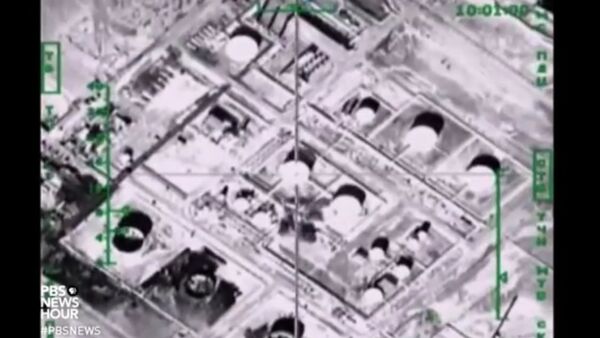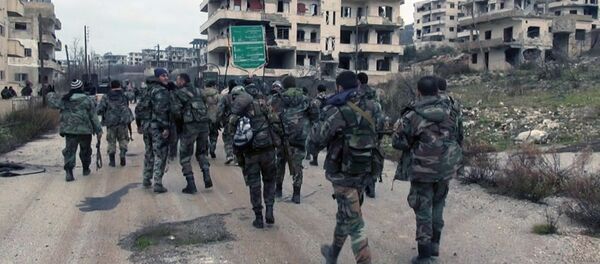"While the public has had a progressively more candid view of war since graphic photographs emerged from Vietnam, aerial-drone footage adds a degree of clarity, motion and depth to the portrayal of conflict that may dramatically alter the way wars are covered by the media," Adam Saxton, a research intern at the Center for Strategic and International Studies, wrote for the National Interest.
Russia has been at the cutting edge of this media revolution, documenting refugee camps, clashes and the devastation that the war has caused across Syria among other things. One of the recent videos offered a bird's-eye view of Palmyra at the time when the Syrian Arab Army (SAA) and its allies were fighting to push Daesh out of the ancient ruins.
The SAA, assisted by Russian warplanes, freed the UNESCO World Heritage site on March 27.
Another aerial video released several days later showed the Christian town of al-Qaryatayn, located to the south of Homs.
"Western media outlets and the United States would do well to consider incorporating this innovative technology into its own broader coverage of conflicts and as another tool for information operations," Saxton observed.
After all, UAVs are capable of doing what can hardly be achieved by any other means.
"The way in which this footage has permeated the media landscape demonstrates the power it has to tell a story," he added.
Drones are already used to cover issues ranging from sporting events to natural disasters, like the April 2015 earthquake in Nepal that claimed more than 8,000 lives, injured more than 21,000 people, raised villages to the ground and destroyed several ancient buildings.





